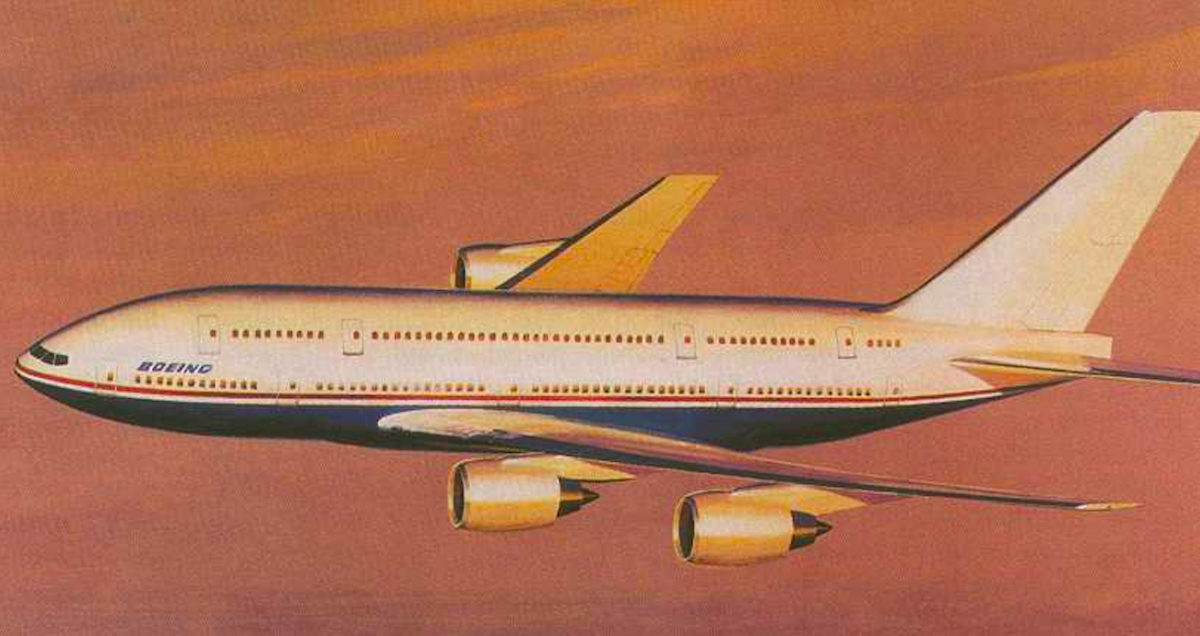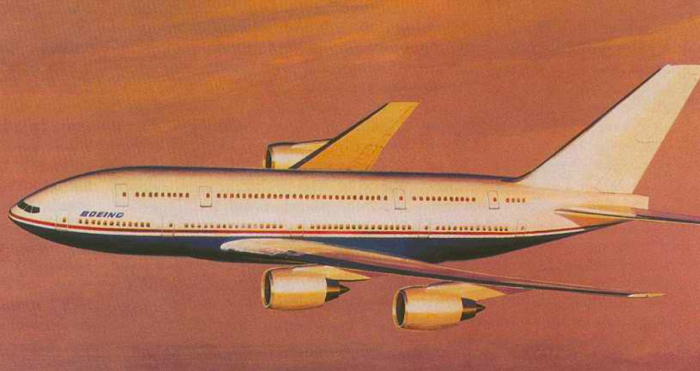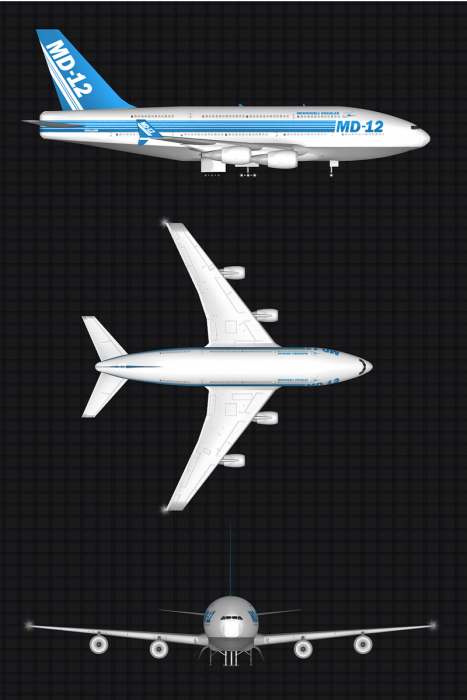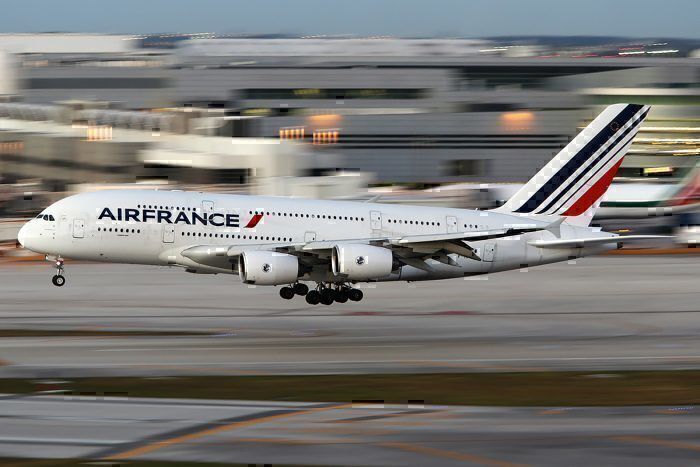It is no mistake that Boeing and Airbus are stuck in a cutthroat competition to develop and build the best commercial passenger aircraft in the world. This is a battle fought on many fronts, from the A320 vs 737, A330 vs 777 and A350 vs 787
But one battle that never took place was the competitor to the A380. What was the Boeing NLA and why was it never built?
What was the Boeing NLA?
The Boeing NLA, or New Large Aeroplane, was a new design from the American aerospace manufacturer in the 500+ seat market.
Designed in the early nineties to enter service before the end of the millennium, this aircraft would have been deployed on the same routes as the A380 is today. Massive long-range hub to hub routes like Sydney to Dubai or London to New York.
The aircraft would have had two decks and been powered by four engines (at the time twin-jets were still not allowed to cross the Pacific Ocean) and looked somewhat similar to the MD-12.
Naturally, Boeing would not have kept the NLA moniker but would have given the aircraft a proper 7XX number. Likely as the 787 and 797 were not in use at the time (and technically the 797 still isn't either), they would have used one of those numbers.
How did it compete with the A380?
So how did the Boeing NLA match up with the A380? Here are some stats based on limited designs:
- The A380-800 could carry 555 passengers in a three-class configuration (Specifically listed as 22 first-class passengers, 96 business class passengers and 437 economy passengers) or a massive 853 passengers in an all-economy configuration. It has a range of 14,800 km / 8,000 nm (although there were some range improvements on the drawing board. The A380 is 73 meters long.
- The Boeing NLA would have sat 606 passengers in a long-haul three-class configuration and would have pushed 900 passengers in an all-economy configuration (maybe even 1,000 if a truly evil airline exists). It would have had a range of 7,800 nmi (14,400 km; 8,980 mi). It would have been around the same size at 74 meters long.
As we can see, Boeing intended to beat the A380 on sheer passenger numbers and would have matched the range of their European counterpart. Likely we would have seen an American carrier purchase the aircraft at cost to get it into the market, with plenty of support from Asian airlines (thanks to the political power at Boeing).
Why was it never built?
In 1993, Boeing decided that the market direction was not going towards high capacity hub to hub aircraft, but rather more bespoke routes linking more niche destinations (Instead of London to New York, Manchester to Boston, allowing passengers to fly direct without transferring).
Boeing decided to focus their large capacity goals 'on the Boeing 747-500X and -600X, then 747X and 747X Stretch, and after that, the Boeing 747-8'.
If you enjoyed this article, be sure to check out the others in the series:
- The insane Russian double-decker aircraft that used escalators to transport passengers.
- The supermassive aircraft that would have needed Lockheed Martin, Airbus and Boeing to work together to build.
- The 'other' American competitor to the Airbus A380 that was never built.
- The 747 design that actually had a double-deck throughout its fuselage.
- The story of the reverse double-deck aircraft, the Boeing 767X.
What do you think of this design? Would you have liked to see a Boeing NLA? Let us know in the comments.




